Steve travels #25: Mosques, mausoleums and madrassas
My first full day in Samarkand and I am not mucking around. Afraid I’ll be locked out of the Registan again by this music festival, I’m lined up for a ticket by 8:15.

Except there is no one else waiting, the place is deserted. Until I ask for a ticket, and suddenly a crowd of 20 people jostling behind me as materialised out of absolutely where, like a weird prank.

The Registan was sort of Samarkand’s Forum. A collection of buildings at the heart of the city, of which two madrassas (Muslim religious schools, vaguely akin to monasteries) and a mosque remain. Somehow it’s the archways in front of each building that steal the show though. They are colossal, upsetting my delicate sense of scale. “What is this, a mosque for giants?” a snickery voice in my head says.

The many rooms (referred to as “student cells”) of the madrassas are now mostly occupied by handicraft stalls. One however is locked, with a window I can’t help peering in. A man outside asks if I want to go in, which, well, yes, of course.
It’s full of an assortment of guitar-like instruments, which he explains, and gives me the names of. My brain files these under “do not remember” and pays more attention to the number of strings: 2, 3, 5, 10? I ask if he plays, and get an impromptu demo, as he reveals he is the craftsman who made them all. The bodies of some of the instruments are made from animal skins: cow, fish, in one case a beef heart membrane!
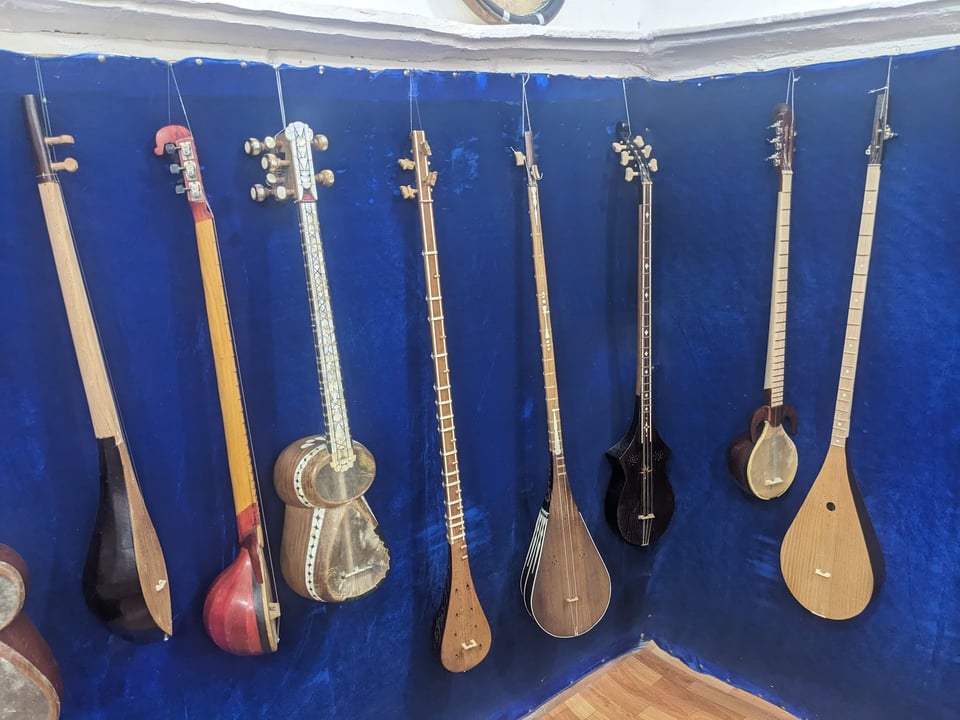
A short walk to the Bibi Khanym mausoleum and mosque and we do it all again, but bigger. The archway (“portal”) is truly gigantic. The mosque building was in ruins by the 1970s until the Soviets stepped in and reconstructed it, much to the disapproval of my guidebook’s author.
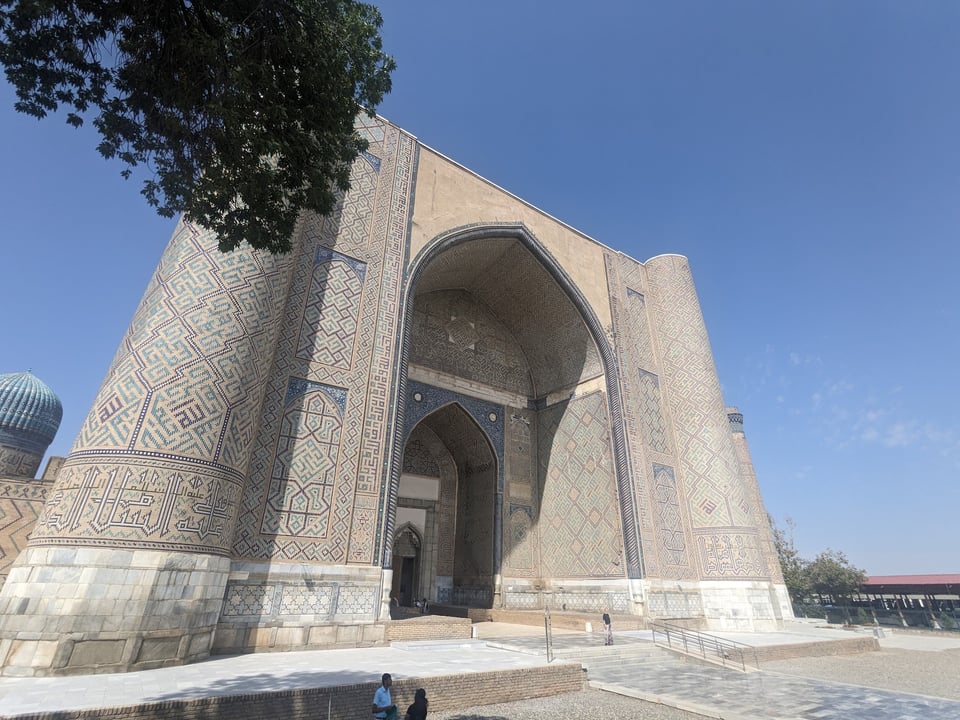
There is of course a huge turquoise dome on top of the building, but weirdly you can’t actually see this dome from the main courtyard because the archway is so tall.

Bibi Khanym was the wife of Timur, the local conqueror, who named the mosque after her. She in turn commissioned the adjacent mausoleum but is not actually buried there.

The adjacent bazaar is a little too orderly and well designed for my tastes, so it’s taxi time to Afrasyab, the ancient fortress which marks the beginning of Samarkand’s history. The guide suggests one needs a good imagination to make sense of the archeological site, and to begin with the museum. But other than a faithful recreation of an impressive mural featuring Turks and Chinese and hunting scenes, the museum is a bit dull.
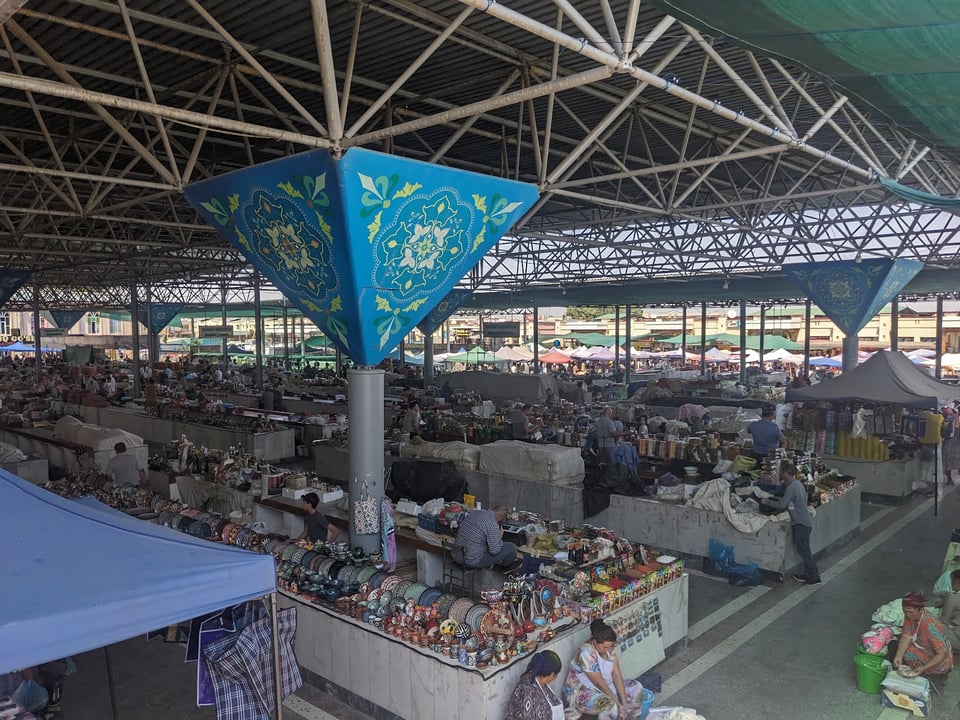
So I stroll boldly out into the fortress complex itself. It is a terrible decision. For a couple of hours I walk around a vast wasteland of lumpy dirt and search in vain for anything at all more interesting than a misshapen mound of earth. The highlight might be a pit which was definitely some kind of archeological dig site, but it is all excruciatingly boring.
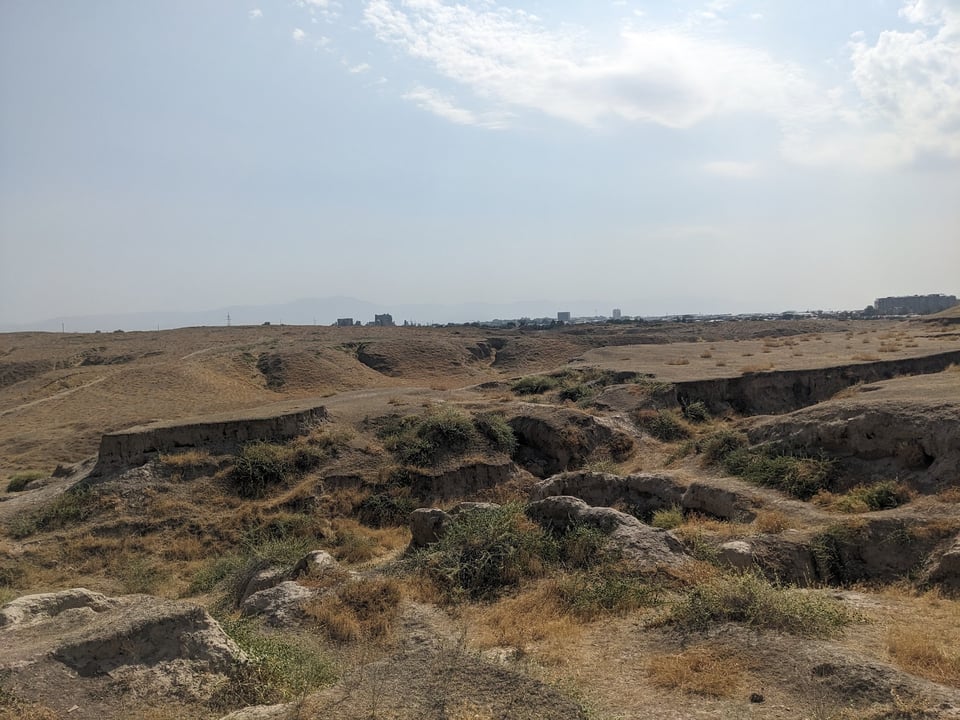
A long walk out to the Ulugbek Observatory isn’t much better. Firmly in the category of “interesting to read about, not much to see”, the observatory was a huge achievement of the 15th century. Containing an enormous, very carefully constructed “quadrant principle device” made from marble, and partially below ground level, the observatory enabled the calculation of facts such as the length of the year, the tilt of the earth, and the locations of many stars, with unprecedented accuracy.
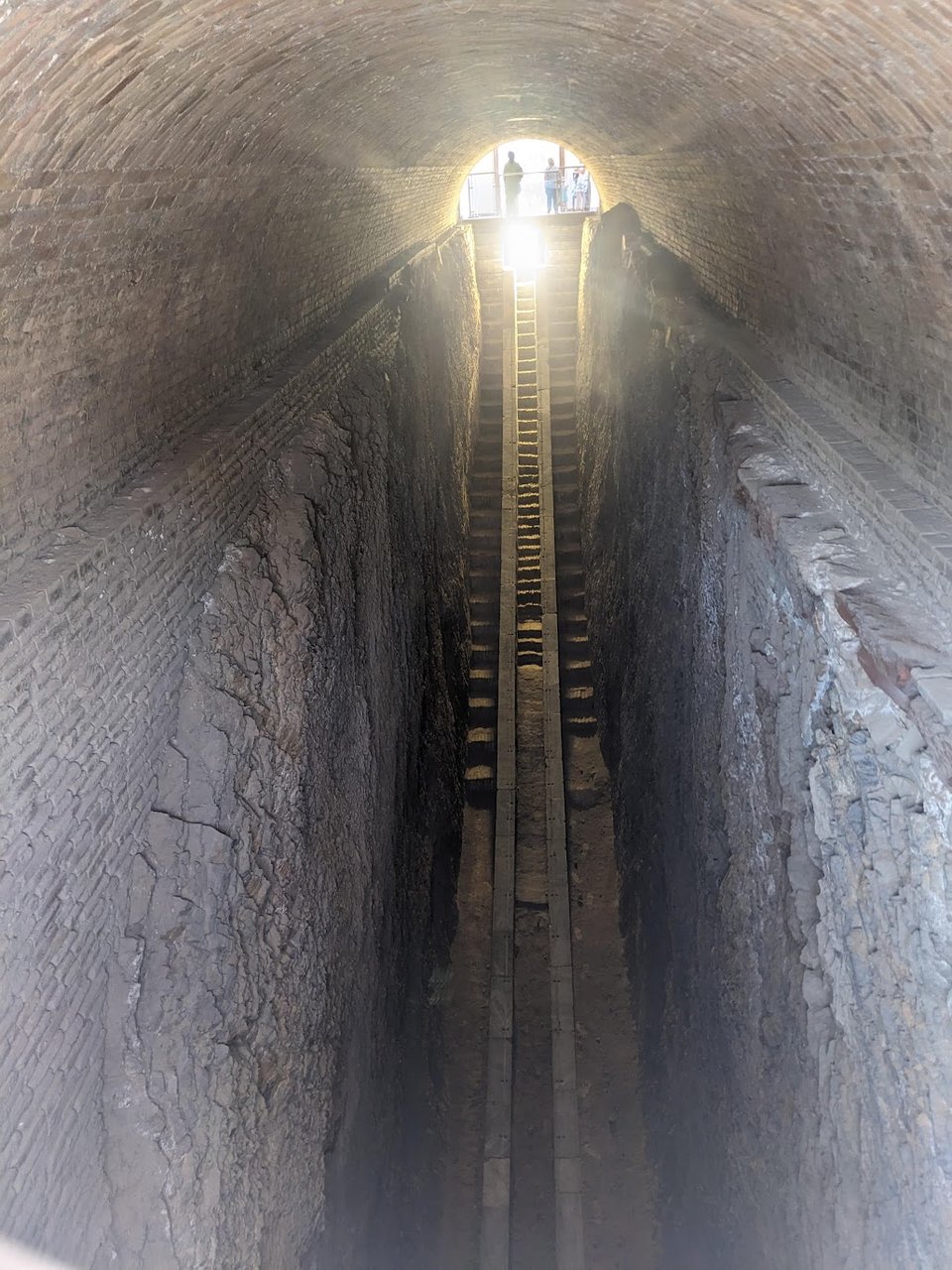
Unfortunately the observatory itself was destroyed only a few decades after it was built, and the only remnant is the below-ground part which holds the attention for about one minute. Of more interest in the adjoining museum are the informative signs mistakenly claiming Buzz Aldrin as the first person on the moon. He must be thrilled.
Now I’m retracing my steps to the Shah-i-Zinda complex of mausolea and mosques, arriving just before sunset. I need to sneak through a cemetery which is technically closed, but the groundskeeper decides I’m someone else’s problem. Almost every headstone has an etched image of the deceased, very elegantly done. They all seem a bit displeased with their demise, however.
Inadvertently I descend into the complex from the back, bypassing the ticket office. The mausolea aren’t huge but they are numerous, diverse, and beautifully decorated. There’s a great lookout for sunset, and as the moment approaches, everyone is buzzing about for their perfect Instagram moment.


I force my weary legs on a different route through Samarkand, taking the quiet backstreets, laneway-like with central gutters. It feels like a different city. A vibrant neighbourhood with kids playing in the streets, men telling jokes in little clusters, teenage girls practising their dance moves, and women lugging babies about. Vehicle traffic is almost totally absent. I’m envious of the people who live in such a tightly connected community.
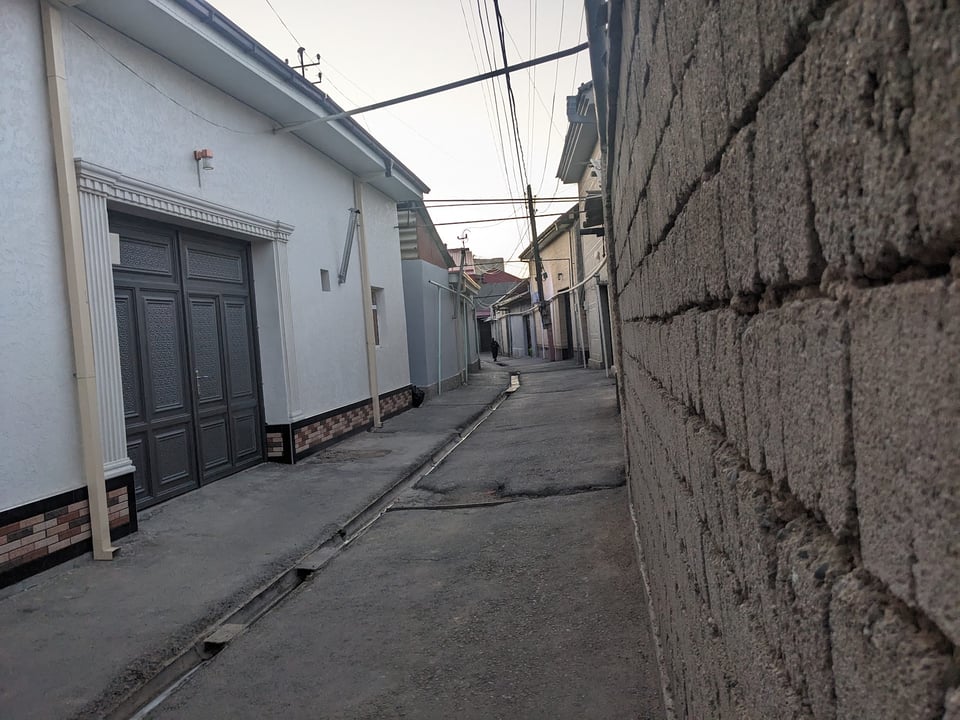
The ostensible reason for this route is a small mosque which turns out to be under renovation. Reaching the Registan at last, I see there is some kind of public concert on tonight, but I’m too tired to even entertain the idea.

The evening rounds out with a surprisingly entertaining lecture from a young American hostelmate about how most interpersonal relationships are based on supporting “dysfunction” in the other person, and how he is moving past such petty human concerns as wants and needs. Before I can mount a rebuttal, he abruptly announces his taxi has arrived, and he is off to catch a train to the border town of Termez. The border with Afghanistan that is - only a 6 hour drive away.
I’m too zonked to think about tomorrow, and creep off to bed to let it arrive by itself.